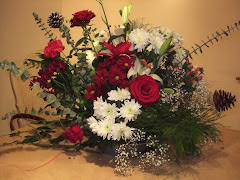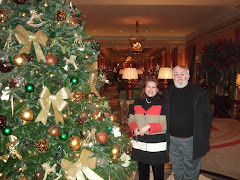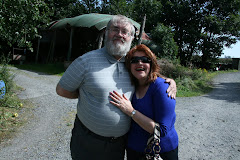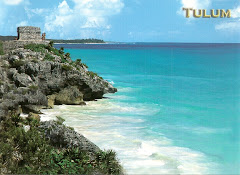Thursday, 29 March 2012
ADVENTURES IN EK-BALAAM
Hi there, I have been away for sometime and it's only now that I have a chance to write again since we have been in Cancun enjoying the beautiful aqua-marine waters of the Yucatan Peninsula but whilst we were there, I wanted to take the opportunity to visit more of the fantastic ancient lost cities of the Maya Route and learn a little bit more about this mysterious culture. The photos you can see here, are from the city of Ek-Balaam which is two hours drive from Cancun, it's worth the trip. There was no tour to go there but this has never been an impediment for me to arrange my own trip to go wherever I wish to go, so I hired a taxi for the whole day which came to pick us up at at 9 A.M. at our hotel. The day was very hot but there is nothing like coco-nut water to quench the thirst! Once we were at the entrance of the site, we hired a guide so that he could show us the city of Ek-Balaam. We climbed a steep temple and as I was climbing the stairs, I happened to notice a sea-shell incrusted on the floor of one of the stairs and asked our guide Casimiro about it. He told me that all of the Ek-Balaam site had been at one time submerged underneath the waters of the Gulf of Mexico and it has suddenly been uncovered when a huge meteorite fell in Ixalum, some kilometres away. Once we got to the middle of the pyramid I was fascinated to see a sculpture of a man with large wings behind his back like an angel. I found it very interesting that the very idea of winged men could be also be seen in this other independent culture that had nothing to do with the Greeks, nor the Egyptians or Mesopotamia who first showed in our culture the concept of winged beings but the other fascinating thing to see, was a stucco painting which looked very much like the ones you see in the Egyptian tombs, there was also a figure perched in what looked like a ledge and that similar to the figures you see in Budhist temples in Thailand. Casimiro told me that this was an eunoch who looked after the Royal ladies, he was sitting on a ledge on an enormous square slab, this slab had heads of Tlaloc in each bottom corner and the really dark square doors beyond, represented the gateway to the underworld unfortunatelly I couldn't stay too long up there because I had left Peter down below sitting on a bench underneath the shade of a tree as he had previously stumbled on a stone before the climb and he had scratched both knees and hands. Poor Peter had his trousers reduced to shreds and he looked pitiful but a nice lady had given me wet cloth towels to disinfect his wounds so I didn't want to leave him too long down there. When I got down, I hired a rick-shaw so that he could sit on it and be comfortably driven to see the stellas and the other buildings like the stadium, where the ball game was played. Some of the structures had the unusual arquitecture of triangle shape doors, which didn't come into Europe until much later. Afterwards, we headed down to the city of Valladolid founded by the Spanish Conquistadores. Valladolid is the second largest city of the Yucatan Peninsula after Merida (which we visited last year) where we made a stop over for a lunch, I enjoyed seeing this colonial town with its iron balconies and the cathedral just in front of the park. Once we arrived back at the hotel in Cancun, in the evening Peter had a warm bath and I summoned the hotel nurse to desinfect his wounds properly, in two days time his knees had completely healed. I could do this again.
Subscribe to:
Post Comments (Atom)
































































.jpg)
.jpg)










































9 comments:
Hi Maria
What a strange name, Ek Balaam. It sounds middle eastern rather than Mexican.
I wonder what rock those sculptures are carved from. Also, whether they were originally painted.
I should think the idea of a winged figure was pretty universal. Birds are always associated with freedom, and the sky was associated with the gods. Of course, one can have too much freedom – Icarus committed the sin of impiety by flying too close to the sun, and was punished for it.
I’m glad you managed to patch Peter up!
Well, we can´t say its "Mexican" since this was Pre-Columbian and the term Mexico didn´t exist when the Mayas created this culture which dates back to 841 B.C. Ek-Balaam in the Maya culture means ´Black Jaguar´ or ´Dark Jaguar´. The sculptures are carved out of lime and yes, they would have been painted with vivid colours. You are correct, that´s pretty much it about the winged figures since these winged warriors are beside the king or ruler´s tomb.
Actually, the the time the Spanish arrived to this area, the Maya culture had already vanished, their descendants were still there but they knew very little since it was so ancient. The Spanish in their ignorance thinking it was heathen and not Christian burnt most of their written codices. Very few survived which are now in different museums around the world like for instance the Dresden code.
Beneath the man on the ledge is an enourmous open mouth of a snake with fangs. I will post more pictures today so that you can see the stucco paintings made on lime. For me, its incredible that a completely different culture with no contact with Egypt has arrived to the same pictorical conclusions in terms of using lime as a base to paint on, although there are fine examples of paintings on clay as well as stucco too.
Hi Maria
It's always tragic when something unique gets destroyed.
How would you rate the craftsmanship here?
Remember that these are state sculptures which are in function to their beliefs, the after-life and also a way to conmmemorate the memory of their rulers over the centuries, so in that sense, it has succeeded since we know precisely what is the name of this king: Ek-Balaam who founded this city and exactly when he founded it as the date is written on the plimpth, 3rd of September 841 (before Christ) Every art piece tells you a story, its history and the characteristic of what place you are looking at, like if you saw Greek Orthodox icons, you can immediatelly know it is from that part of the world or if you saw medieval paintings in a holly book just by looking at them you know where to place it in time and the era it was made.
Yes, well they'd have put their best sculptors on the job. I can't see from the photos, but are the faces generic, or individualised (particularly the King's)?
When you think of what ancient civilizations achieved, without our technology, it's quite astounding really. It's not as if they had a bottomless supply of klabour either - populations were very small in those days.
No, the face of the King compared to the two warriors with wings and the eounoch (figure perched on a sledge) are individualised. This was quite a large town of 12 square kilometres, but the main square where the wealthy people lived, was only One km2 You are right about what they achieved without our technology. I think its amazing, especially how they manipulated the echo, where they could make hundreds of people hear a speach without a modern microphone that is something they are still studying right now in Mexico's University.
Yes, so many things that we take for granted, would not have been at all easy for people in ancient times. It's hard to imagine the day-to-day life, but even harder to imagine their 'mental furniture,' their way of seeing the world and themselves, with all their assumptions and expectations.
Post a Comment